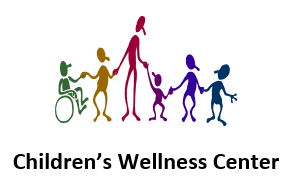During the 2021-2022 school year, about 19% of students between the ages of 12 and 18 reported being bullied at school and 22% reported being bullied online or over text messaging. While these numbers are lower than those reported in U.S. schools a decade earlier, they are still significant, and no less concerning – especially, if your child is among those involved.
Bullying negatively impacts all who are involved, including the victim, the perpetrator, and the bystanders. Children who bully are commonly bullied, and those involved can suffer negative physical, psychological, and academic effects such as:
- Injury
- Stress and trauma
- Insomnia
- Stress-related physical effects
- Depression
- Anxiety
- Low self-esteem
- Harming behavior
- Alcohol and drug use
- Aggression
- Increased risk of involvement in violence or crime
- Lower grades and standardized test scores
How to Recognize Bullying
To recognize bullying, adults must first understand what bullying is.
Bullying Definition
Bullying is defined as any unwanted aggressive behavior by a youth or group of youths (who are not siblings and not dating partners) inflicted on another youth. Bullying always involves an actual or perceived imbalance of power, and the aggressive behaviors are repeated or likely to be repeated.
Bullying behaviors can include:
- Physical – Tripping, hitting, kicking, etc.
- Verbal – Teasing and name-calling
- Social – Spreading rumors or excluding from a group
- Damaging – Breaking or harming a person’s personal property
- Electronic – Bullying behaviors that occur through technology (cyberbullying)
Signs of Bullying
Signs that a child is a victim of bullying include:
- Unexplained behavioral changes
- Unexplained physical injuries
- Lost or destroyed belongings
- Difficulty sleeping
- Frequent nightmares
- Frequent headaches, stomachs, or feeling sick
- Faking illness
- Not wanting to go to school
- Declining grades or loss of interest in schoolwork
If you notice any of these signs of bullying in your child, you should talk to your child about what you have noticed and take action to address the problem.
Supporting Victims and Addressing Bullying Behavior
Bullying should be addressed in two ways: by supporting the victim and addressing the perpetrator.
Supporting Victims
To support a victim of bullying, parents must encourage open and compassionate communication with their children that helps them talk about their challenges without shame or worry.
Additionally, the parent should involve school authorities by contacting the teacher and school counselor at a minimum. If necessary the principal, superintendent, and even the state department of education can be involved.
Adults should focus on the child and listen to what they have to say before reassuring them that the bullying they have experienced is not their fault. The parent or teacher should then provide advice on how to deal with the bullying. For example, parents can teach their children how to address bullying in a way that reduces the bully’s power. When children act bravely, walk away, and ignore the bully, the bullying behavior becomes less effective. Parents and teachers can even help a child practice by role-playing a make-believe bullying situation.
Responding to Bullying Behavior
Bullying behavior should also be addressed by providing help to the perpetrator. A teacher or other adult authority figure should make sure that the child understands why their behavior is a problem and that they know that bullying is taken seriously.
The adult should then work to understand why the child chose to bully. For example, children sometimes act out in this way in response to a traumatic experience, to build their own confidence, or when they feel weak for some unrelated reason.
The perpetrator should face appropriate consequences that are designed to help make amends, develop healthier relationships with other children, and build empathy for others.
Reducing Bullying Prevalence
Bullying can also be reduced and prevented by establishing rules for interacting with peers and guidelines for reporting and addressing bullying behaviors. These rules and guidelines should then be strongly and consistently enforced.
Parents and teachers can help kids learn how to stand up to bullying in a safe way and help encourage kids to stand up to bullies on behalf of their peers. Parents and teachers should also maintain consistent lines of communication so children always feel safe to report bullying instances to a trusted adult (like a parent, teacher, or coach).
Adults should focus on actively educating children about empathy, assertiveness, and respect. While modeling respectful and kind behaviors, parents can also encourage their children to be themselves and do what they love to help them build confidence and make friends.
Working Together
Victims of bullying are best supported and bullying behaviors are best addressed when parents, teachers, and school counselors work together to protect the bullied student and address the student who has done the bullying.
Seeking Professional Support for Bullying
At Children’s Wellness Center, we believe that healthy children are healthy in body, mind, and emotion. If your child is struggling with bullying, we encourage you to reach out to your child’s teacher and school counselor in addition to talking with a pediatric healthcare professional. If you have any questions about recognizing signs of bullying or dealing with bullying behaviors, please contact us.

